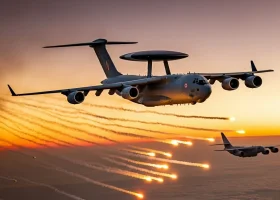- Views: 849
- Replies: 13

With the increasing presence of stealth fighter jets near India's borders, the Indian Air Force (IAF) is enhancing its radar capabilities to maintain its edge in air defence. Both China and Pakistan are expected to deploy significant numbers of stealth aircraft in the coming years, posing a new challenge to India's air defence network.
To counter this evolving threat, the IAF is focusing on deploying advanced radars operating in the Ultra High Frequency (UHF) and Very High Frequency (VHF) bands, known for their effectiveness in detecting stealth aircraft.
An IAF official highlighted the crucial role of early detection systems, stating, "These radars will play a crucial role in identifying stealth aircraft and mitigating potential misadventures."
Stealth aircraft are designed to evade detection by conventional radar systems through specialized materials and shapes that deflect radar waves. However, radars operating in the UHF and VHF bands exploit a vulnerability in stealth technology. These radars utilize longer wavelengths that are less easily absorbed or deflected by stealth coatings and designs, making them more likely to detect and track stealth aircraft compared to conventional X-band radars.
While UHF and VHF radars generally have shorter detection ranges, their ability to identify stealth aircraft at a distance provides crucial early warning for air defence systems. The IAF plans to procure advanced Active Electronically Scanned Array (AESA) radars incorporating UHF and VHF band technology. These AESA radars are expected to significantly improve the detection and tracking of low-observable targets while offering superior reliability and resistance to electronic countermeasures.
To maximize their effectiveness, the new radars will be integrated into India's existing Integrated Air Command and Control System (IACCS). This integration will enhance situational awareness and improve coordinated responses to potential aerial threats.
While UHF and VHF radars excel in detecting stealth aircraft, they also have limitations. They generally offer shorter detection ranges and less precise target identification compared to higher-frequency radars. To overcome these challenges, the IAF plans to employ these radars as part of a multi-layered defence strategy. By combining them with higher-frequency radars and integrating data from various sources, India can establish a robust and comprehensive detection and response system.
By investing in advanced radar systems and adopting a multi-layered approach, India aims to maintain a robust and effective air defence network capable of countering the growing threat of stealth aircraft in the region.

